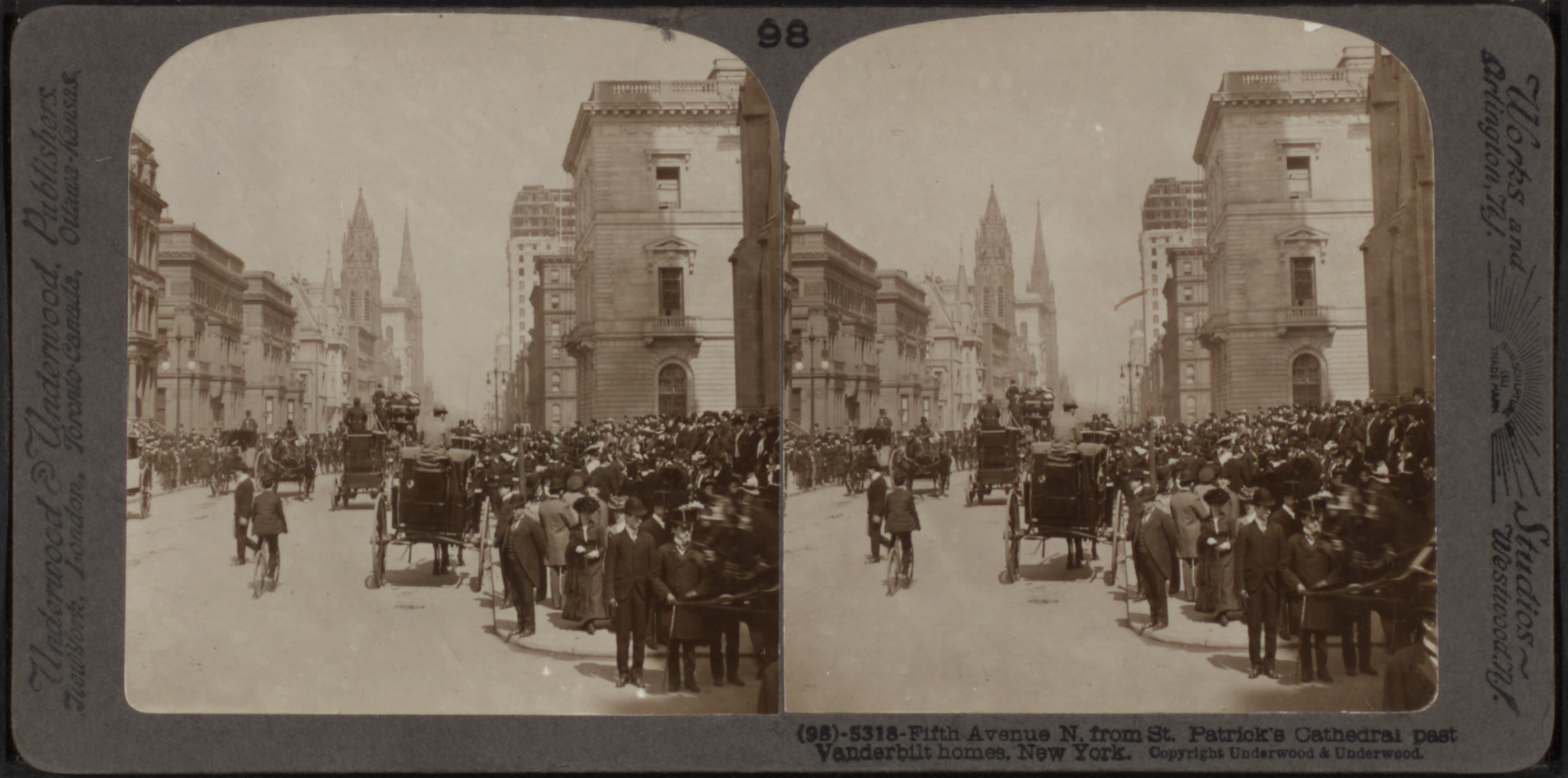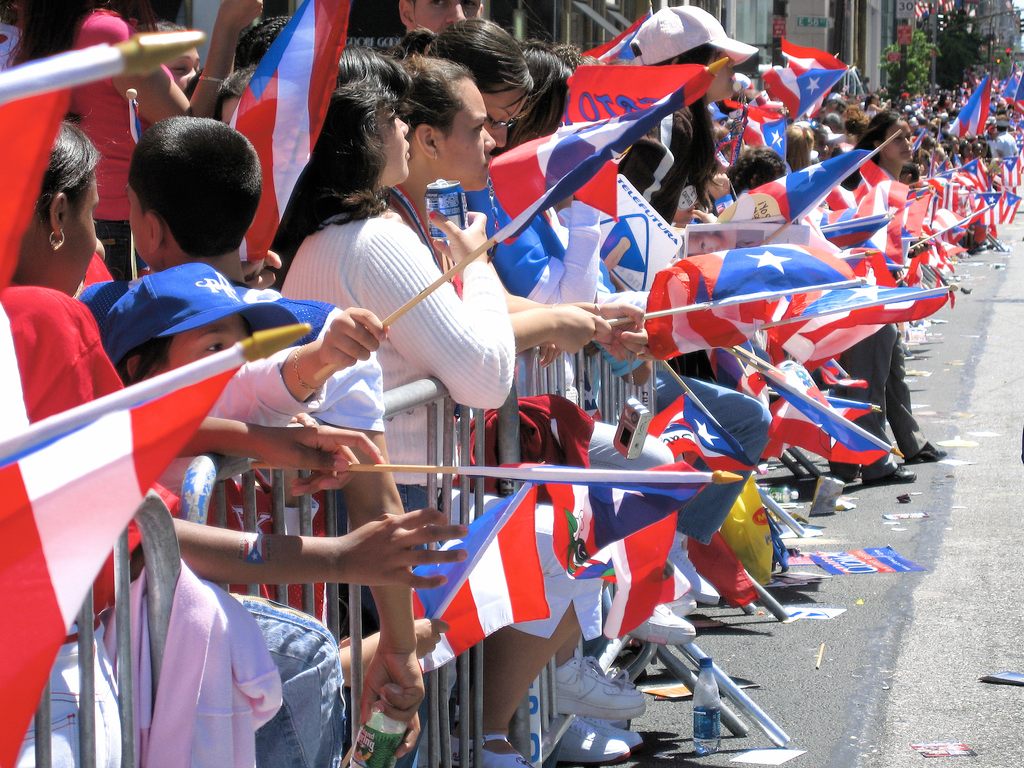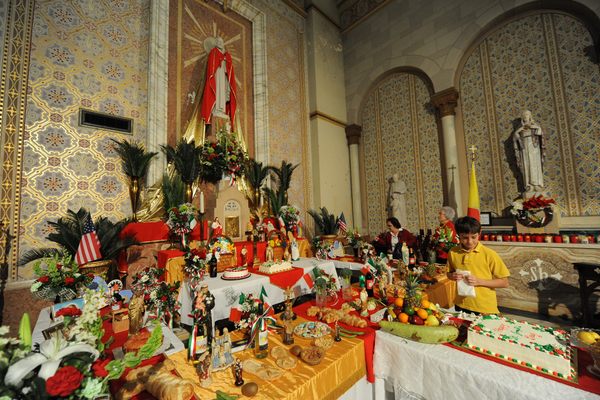How the St. Patrick’s Day Parade Paved the Way for Other Immigrant Groups
The parade, invented in America, inspired others to come.

Bagpipers at NYC’s St. Patrick’s Day Parade. (Photo: tpsdave/CC0 Public Domain)
The first St. Patrick’s Day Parade, which took place in New York City in 1792, set a precedent for the city’s other immigrant groups. Though the parade is better known today for its green beer and boisterousness, it’s worth remembering that, 224 years ago, it was the first public celebration of heritage and pride of its kind. Indeed, New York City was the original birthplace of the St. Patrick’s Day Parade, which has since spread back to Ireland, as well as to cities across America and the rest of the world.
While St. Patrick’s Day had long existed as a feast day in Ireland, the parade itself did not. In New York City, it began more as a string of celebrations, eventually growing to the point where, by the 1850s, certain streets were closed and traffic halted while revelers paraded through the city. In 1869, New York City mayor A. Oakey Hall joined the celebrations, dressed in an emerald flytail coat.

New York’s Fifth Avenue, picture here from St. Patrick’s Cathedral in 1900, was home to the parade and has since been home to many others. (Photo: New York Public Library/Public Domain)
In the early years, Irish immigrants suffered discrimination and stigmatization, serving as the frequent butt of jokes and illustrated as brutish characters in cartoons. According to the Library of Congress, the Irish entered the U.S. workforce “at the bottom of the occupational ladder and took on the menial and dangerous jobs that were often avoided by other workers.” One newspaper article from 1868 joked that on St. Patrick’s Day, no household could expect their maid to show up for work–most maids at the time were Irish.
Annie Polland, who works at New York City’s Tenement Museum, says that the parade served as a day for everyone to realize what an important role the Irish played in the city. By the late 1800s, they made up about a quarter of the city’s population.
“You think about how St. Patrick’s was important not just for the Irish but for every ethnic or religious or any other identity group that comes afterwards. It sets a template for how to step away from day-to-day life,” says Polland. “How do we live our collective identity? These parades are a way to say ‘Hello, we’re here!’”
This template was in some cases the actual parade route, but more broadly speaking, it set the tone for publicly celebrating pride and identity, in a society with a tendency to ignore or suppress both.

NYC’s National Puerto Rican Day Parade has become a major event. (Photo: Boss Tweed/CC BY 2.0)
The National Puerto Rican Day, Greek Independence Day, and German-American Steuben parades, for example, mimic the same route; just like the St. Patrick’s Day Parade, they begin somewhere around 44th Street and stretch down Manhattan’s Fifth Avenue. First held in 1958, the National Puerto Rican Day parade honors the millions of Americans of Puerto Rican heritage, while the Greek Independence Day Parade goes back to 1938 and commemorates the day that Greece achieved independence from Turkey, in 1821.
The New York Tartan Day, founded in 1998 by Alan Bain, recognizes Scottish Americans and their contributions to the United States. That first year, Bain says, they ended up just walking down the sidewalk along Third Avenue, though the parade has since grown and now takes place on Sixth Avenue. Bain, who grew up in England to Scottish parents and came to the U.S. as an exchange scholar and then as a law student, says he remains very keen on his identity as a Scot.

A snapshot of NYC’s Tartan Day Parade in 2002. (Photo: Leesdg/Public Domain)
Bain says that most Scots in Scotland have never heard of Tartan Day. Like the St. Patrick’s Day Parade, it began as an American invention to honor a distant homeland. And as with the St. Patrick’s Day Parade, certain communities in the homeland have actually adopted Tartan Day, and now host parades.
The German-American Steuben Parade, dating back to 1957, was once again an immigrant invention. It has grown from a small parade in Queens to a grand affair down Fifth Avenue featuring groups from all over the U.S. as well as Germany and Austria. “German-Americans have been the largest ethnic group in the country forever,” says Lenny Coyle, the parade’s PR Committee Chairman. “One in five Americans is of German descent; up until 1990, it was one in four.”

The German-American Steuben Day Parade going by the Metropolitan Museum on Fifth Ave. (Photo: CC BY-SA 2.5)
Coyle says that the Steuben Parade definitely took inspiration from the St. Patrick’s Day Parade. Their parade even kicks off with a big service at the St. Patrick’s Cathedral. “I’m half-Irish,” says Coyle. “I’m wearing my green bowler hat!”
In America, land of immigrants, even descendants of immigrants who have never returned to their original homeland hold tight to the traditions of their ancestors. Bain says there’s something innate in a person’s system—“It’s like salmon going to spawn.”

A St. Patrick’s Day Parade in Moscow, Russia. Imagine if we showed this much enthusiasm for all immigrant communities! (Photo: Кирилл Сергеев/CC BY-SA 3.0)
Coyle, with his green bowler hat, and Bain, with his Scottish-American pride, are both reminders that immigrant identity, or any identity, is never singular. And today, 224 years after that first Irish-American pride parade, there are many groups who could still benefit from the original St. Patty’s Day template, outsiders needing to confirm their presence and remind us of the important roles they play. Like the Irish of the early 19th century, these groups, too, deserve to belong, whether they are immigrants from Mexico, Ethiopia, or Syria.
It’s nice to imagine that in 200 years Americans might celebrate the pride of other immigrant groups with the same zest and jolly drunkenness as they now do for the Irish, who were once the most disliked folks in town.











Follow us on Twitter to get the latest on the world's hidden wonders.
Like us on Facebook to get the latest on the world's hidden wonders.
Follow us on Twitter Like us on Facebook